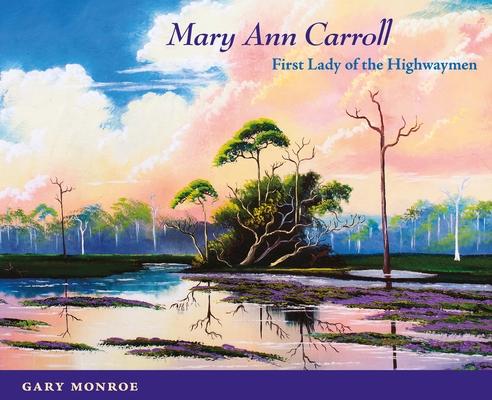
In the years since the art world discovered them, much has been made of the Highwaymen--the loosely knit band of African American painters whose edenic Florida landscapes, created with inexpensive materials and sold out of their cars, "shaped the state's popular image as much as oranges and alligators" (New York Times). But lost in the legends surrounding the group is the mesmerizing story of Mary Ann Carroll, the only female "Highwayman." In 1957, sixteen-year-old Carroll met Harold Newton, later dubbed the original Highwayman. He was painting a landscape along the side of the road. There were red flames on his car. Yet what shocked the young African American girl most of all was discovering a Black man who didn't work in the orange groves, who made a living off of his paintings. It wasn't long before she was creating and selling her own landscapes, and the other Highwaymen, taking note of her startling use of color, welcomed her into the fold. Carroll sold her first painting at eighteen--remarkable for any young artist, unheard of for a Black woman in the South. Like her Highwaymen brethren, she travelled across the state, selling her art at hotels, offices, and restaurants where she was not allowed to drink, eat, or even sit. If the Highwaymen faced discrimination at every door they knocked on, then the challenges--and dangers--were magnified for Carroll. She took pride in always having her pristine Buick gassed and ready to go and her small handgun cleaned and ready to use. After years of virtual obscurity, Carroll was invited to the First Lady's Luncheon in 2011, where she presented a painting of her iconic poinciana to Michelle Obama. In her later years, Carroll was pastor of the Foundation Revival Center in Fort Pierce,
was an accomplished musician, and continued to paint and exhibit her work widely.
Mary Ann Carroll is the never-before-told story of a Black female artist's hard-fought journey to provide for her family while also making a name for herself in a man's world.
In the years since the art world discovered them, much has been made of the Highwaymen--the loosely knit band of African American painters whose edenic Florida landscapes, created with inexpensive materials and sold out of their cars, "shaped the state's popular image as much as oranges and alligators" (New York Times). But lost in the legends surrounding the group is the mesmerizing story of Mary Ann Carroll, the only female "Highwayman." In 1957, sixteen-year-old Carroll met Harold Newton, later dubbed the original Highwayman. He was painting a landscape along the side of the road. There were red flames on his car. Yet what shocked the young African American girl most of all was discovering a Black man who didn't work in the orange groves, who made a living off of his paintings. It wasn't long before she was creating and selling her own landscapes, and the other Highwaymen, taking note of her startling use of color, welcomed her into the fold. Carroll sold her first painting at eighteen--remarkable for any young artist, unheard of for a Black woman in the South. Like her Highwaymen brethren, she travelled across the state, selling her art at hotels, offices, and restaurants where she was not allowed to drink, eat, or even sit. If the Highwaymen faced discrimination at every door they knocked on, then the challenges--and dangers--were magnified for Carroll. She took pride in always having her pristine Buick gassed and ready to go and her small handgun cleaned and ready to use. After years of virtual obscurity, Carroll was invited to the First Lady's Luncheon in 2011, where she presented a painting of her iconic poinciana to Michelle Obama. In her later years, Carroll was pastor of the Foundation Revival Center in Fort Pierce,
was an accomplished musician, and continued to paint and exhibit her work widely.
Mary Ann Carroll is the never-before-told story of a Black female artist's hard-fought journey to provide for her family while also making a name for herself in a man's world.
Paperback
$35.00